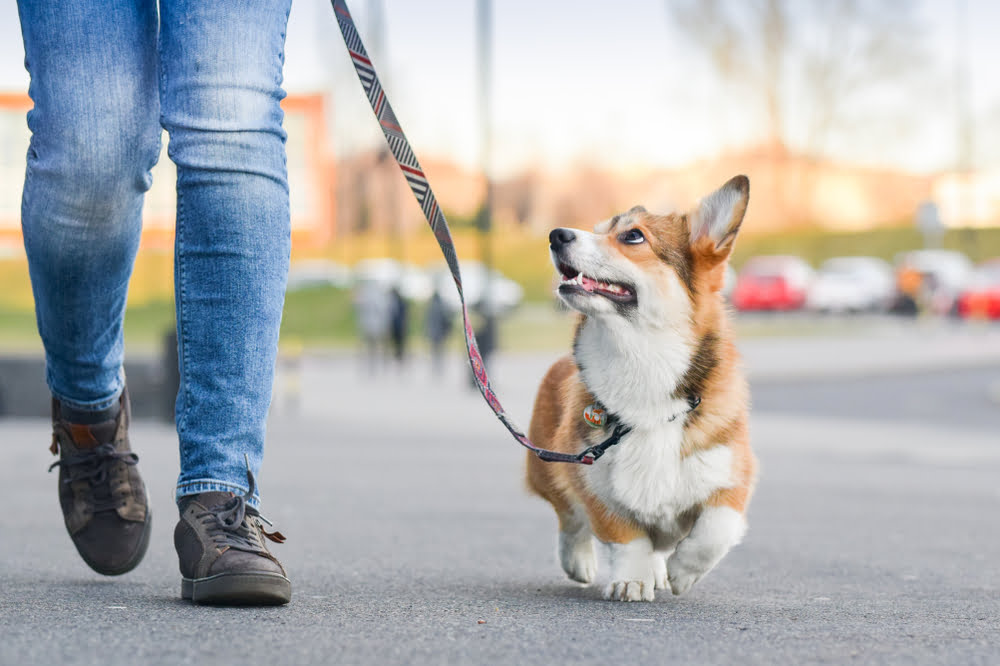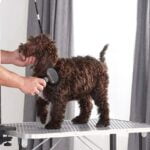Table of Contents
Leash training your dog is essential for enjoyable and stress-free walks. Proper leash training ensures your dog behaves well on walks, making the experience pleasant for both of you. Here are the best methods for leash training your dog.

1. Start Early: Best Methods for Leash Training
Begin leash training your dog as early as possible, ideally when they are a puppy. Early training helps establish good habits and makes the process smoother.
- Tip: Use a lightweight leash and collar to get your puppy accustomed to wearing them. For more information, visit AKC.
2. Choose the Right Equipment
Select a suitable leash and collar or harness for your dog. A standard 6-foot leash and a comfortable, well-fitted collar or harness are ideal for most dogs.
- Tip: Consider a no-pull harness if your dog tends to pull on the leash. For more advice, visit ASPCA.
3. Introduce the Leash Gradually: Best Methods for Leash Training
Let your dog wear the leash indoors for short periods to get used to it. Allow them to drag the leash around under supervision before holding it yourself.
- Tip: Use treats and praise to create positive associations with the leash. For more tips, visit Cesar’s Way.
4. Use Positive Reinforcement
Reward your dog with treats, praise, and affection when they walk calmly on the leash. Positive reinforcement encourages good behavior and strengthens your bond.
- Tip: Keep treats handy to reward your dog immediately for good behavior. For more advice, visit AKC.
5. Practice Inside Before Going Outside: Best Methods for Leash Training
Start leash training indoors in a familiar environment to minimize distractions. Practice walking around your home or backyard before venturing outside.
- Tip: Gradually introduce more challenging environments as your dog becomes comfortable on the leash. For more information, visit PetMD.
6. Teach Basic Commands
Teaching your dog basic commands like “sit,” “stay,” and “come” can help with leash training. These commands give you more control and improve your dog’s behavior on walks.
- Tip: Use consistent commands and rewards to reinforce learning. For more tips, visit The Spruce Pets.
7. Keep Training Sessions Short: Best Methods for Leash Training
Keep initial training sessions short and gradually increase their length. Short, frequent sessions are more effective and prevent your dog from becoming overwhelmed.
- Tip: Aim for 5-10 minute sessions, gradually extending them as your dog progresses. For more advice, visit Humane Society.
8. Be Patient and Consistent
Consistency and patience are key to successful leash training. Stick to a regular training routine and be patient with your dog as they learn.
- Tip: Avoid punishing your dog for mistakes; instead, redirect their behavior and reward positive actions. For more tips, visit AKC.
9. Address Pulling Immediately: Best Methods for Leash Training
If your dog pulls on the leash, stop walking immediately. Wait for them to calm down and resume walking only when the leash is slack.
- Tip: Use the “be a tree” method: stop and stand still whenever your dog pulls. For more information, visit AKC.
10. Practice in Different Environments
Expose your dog to various environments to practice leash walking in different settings. This helps them learn to behave well on the leash regardless of distractions.
- Tip: Gradually introduce new environments, starting with quieter areas and progressing to busier locations. For more advice, visit PetMD.
Conclusion: Best Methods for Leash Training
Leash training your dog takes time, patience, and consistency. By following these best methods for leash training, you can ensure enjoyable and stress-free walks with your furry friend. For more tips on dog training and behavior, visit our website.
Frequently Asked Questions about Best Methods for Leash Training
How long does it take to leash train a dog?
The time it takes to leash train a dog varies depending on the dog’s age, temperament, and previous training. Consistent training over several weeks is typically required. For more information, visit AKC.
What should I do if my dog refuses to walk on the leash?
If your dog refuses to walk on the leash, try to identify the cause, such as fear or discomfort. Use positive reinforcement, start with short sessions, and gradually increase the distance. For more tips, visit Cesar’s Way.
Is it better to use a collar or a harness for leash training?
Both collars and harnesses can be effective for leash training. Harnesses are often preferred for dogs that pull, as they distribute pressure more evenly and prevent choking. For more advice, visit ASPCA.
How can I stop my dog from pulling on the leash?
To stop your dog from pulling, use the “be a tree” method: stop walking when they pull and resume only when the leash is slack. Reward them for walking calmly by your side. For more tips, visit AKC.
Can older dogs be leash trained?
Yes, older dogs can be leash trained with patience and consistency. Use positive reinforcement and start with short, frequent training sessions. For more advice, visit PetMD.











